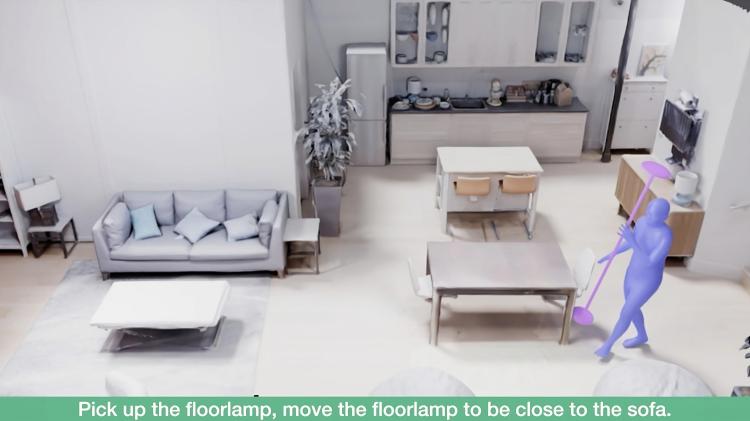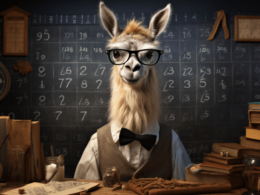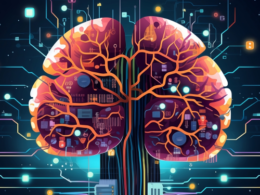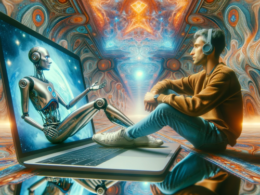Researchers from Stanford University and Meta’s Facebook AI Research (FAIR) lab have made a significant breakthrough in the field of artificial intelligence (AI). They have developed a groundbreaking AI system called CHOIS (Controllable Human-Object Interaction Synthesis) that can generate natural and synchronized motions between virtual humans and objects using only text descriptions.
The CHOIS system utilizes the latest conditional diffusion model techniques to produce seamless interactions and precise movements, such as “lifting the table above your head, walking, and putting the table down.” In a research paper published on arXiv, the researchers provide insights into a future where virtual beings can understand and respond to language commands as fluently as humans.
“Generating continuous human-object interactions from language descriptions within 3D scenes poses several challenges,” the researchers noted.
The researchers had to ensure that the generated motions were realistic and synchronized, maintaining appropriate contact between human hands and objects, and establishing a causal relationship between human actions and object motion.
The Unique Approach of CHOIS
CHOIS stands out for its unique approach to synthesizing human-object interactions in a 3D environment. It utilizes a conditional diffusion model, which is a type of generative model that can simulate detailed sequences of motion. Given an initial state of human and object positions, along with a language description of the desired task, CHOIS generates a sequence of motions that result in the completion of the task.
What sets CHOIS apart is its use of sparse object waypoints and language descriptions to guide these animations. Waypoints act as markers for key points in the object’s trajectory, ensuring that the motion is both physically plausible and aligned with the high-level goal outlined by the language input.
Furthermore, CHOIS integrates language understanding with physical simulation, bridging the gap between language and spatial/physical actions. This integration allows the system to interpret the intent and style behind language descriptions and translate them into a sequence of physical movements that respect the constraints of the human body and the object involved.
“The system ensures that contact points, such as hands touching an object, are accurately represented and that the object’s motion is consistent with the forces exerted by the human avatar,” the researchers explained.
CHOIS also incorporates specialized loss functions and guidance terms during its training and generation phases to enforce physical constraints. This represents a significant step forward in creating AI that can understand and interact with the physical world in a human-like manner.
Implications for Computer Graphics and AI Systems
The implications of the CHOIS system on computer graphics are profound, particularly in the realms of animation and virtual reality. By enabling AI to interpret natural language instructions and generate realistic human-object interactions, CHOIS has the potential to significantly reduce the time and effort required for complex scene animations.
Animators can leverage this technology to create sequences that traditionally necessitate labor-intensive and time-consuming keyframe animation. In virtual reality environments, CHOIS can lead to more immersive and interactive experiences, allowing users to command virtual characters through natural language and witness them execute tasks with lifelike precision.
For AI and robotics, CHOIS represents a giant leap towards more autonomous and context-aware systems. Robots, which are often limited by pre-programmed routines, can leverage CHOIS to better understand the real world and perform tasks described in human language. This has transformative potential for service robots in healthcare, hospitality, and domestic environments where versatility in understanding and performing tasks is crucial.
The ability of AI systems to process language and visual information concurrently to perform tasks brings them closer to achieving situational and contextual understanding, which has traditionally been a predominantly human attribute. This advancement opens doors to AI systems that assist with complex tasks and adapt to new challenges with flexibility previously unseen.
In conclusion, the researchers from Stanford University and Meta have made significant progress in the field of computer vision, natural language processing (NLP), and robotics. The CHOIS system represents a crucial step towards creating advanced AI systems that simulate continuous human behaviors in diverse 3D environments. It also paves the way for further research in human-object interaction synthesis, potentially leading to even more sophisticated AI systems in the future.










